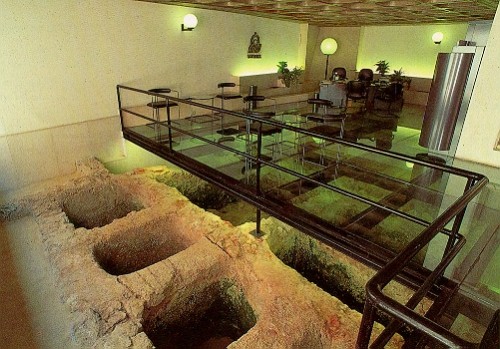|
| Salt-Fish Preparation at Setúbal: Factories at the Tourism Office and at Troia: 1st to 4th centuries AD |


The Roman salt-fish factory under the Setúbal Tourism Office factory produced condiments, sauces, stock and fish flavourings from the salt fish.
The flesh of mackerel, tuna and sardine was soaked in the larger tanks with salt to conserve it. In Roman cooking salt fish was so well liked that recipes for fresh fish were adapted for the salted variety (as in Medieval and early modern England). Perhaps salt fish was more accessible to the middle and poorer classes, fresh fish like red mullet being a luxury for the wealthy which was farmed in private ponds.
Roman garum, liquamen, hallec and muria were sauces, stocks and flavourings that had as a base the gills and entrails of fish, fish eggs, molluscs and oysters soaked in salt and aromatic herbs like thyme. This mixture was heated to accelerate decomposition and left to mature for about two months until a gelatinous substance resulted. Garum and liquamen had a jelly-like consistency, muria was of lower quality, and allec was a cheap solution made by pressing the garum solution before decomposition.
During the 1st century AD these products, hitherto luxuries, became the Empire’s most traded products, making Roman cooking unique - they are present in 90% of the recipes in the only surviving Roman cookery book, attributed to Apicius. However they had a strong smell, until combined as they were in Roman cookery with honey, wine and herbs, so that Roman Setúbal must have been a smelly if prosperous place.
© 1998 Oxfordshire Museum Service, Setúbal Museums and the Benaki Museum